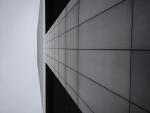
If you've been to midtown Manhattan, you may have noticed the building originally known as Citicorp Center (now just "601 Lexington"). When it was build in 1977, its 59 stories made it the seventh-tallest building in the world. But what makes it especially noticeable is not its top, but its bottom. In order to preserve the property (though not the building) of St. Peter’s Lutheran Church, the tower was built on stilts nine stories high.
The structural engineer did all the calculations, it was safe to do this. Except he got them wrong. A good wind could knock it over. That would quite possibly kill hundreds of people, maybe thousands...
Structural Integrity (99% Invisible)
According to LeMessurier, in 1978 he got a phone call from an undergraduate architecture student making a bold claim about LeMessurier’s building. He told LeMessurier that Citicorp Center could blow over in the wind.
The student [actually a woman, Diane Hartley] was studying Citicorp Center as part of [her] thesis and had found that the building was particularly vulnerable to quartering winds (winds that strike the building at its corners). Normally, buildings are strongest at their corners, and it’s the perpendicular winds (winds that strike the building at its face) that cause the greatest strain. But this was not a normal building.
LeMessurier had accounted for the perpendicular winds, but not the quartering winds. He checked the math, and found that the student was right. He compared what velocity winds the building could withstand with weather data, and found that a storm strong enough to topple Citicorp Center hits New York City every 55 years.
But that’s only if the tuned mass damper, which keeps the building stable, is running. LeMessurier realized that a major storm could cause a blackout and render the tuned mass damper inoperable. Without the tuned mass damper, LeMessurier calculated that a storm powerful enough to take out the building hits New York every sixteen years.
In other words, for every year Citicorp Center was standing, there was about a 1-in-16 chance that it would collapse.